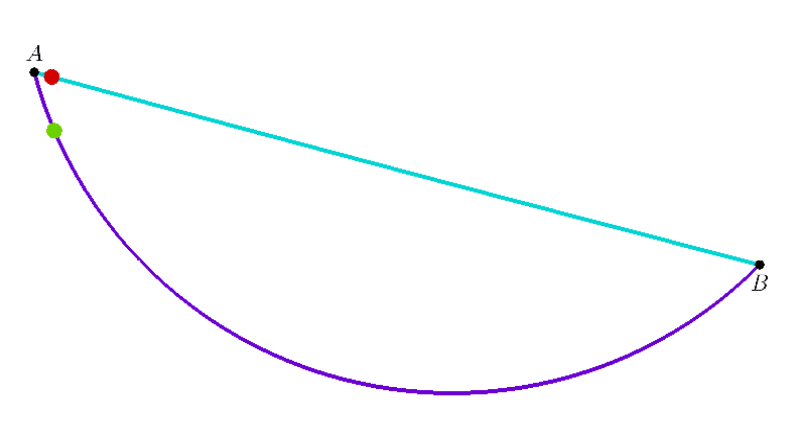Java Physics Simulation
Brachistochrone Simulator
Start
January 2018
End
April 2018

Demonstration of the hill-climbing portion of the simulation, each iteration moving towards the optimal circular arc path as a potential solution to the Brachistochrone Problem.
🏁 Results
With a Δx of 5 meters and a Δy of -3 meters, the following results were derived for the time it takes for the mass to get from A to B, tAB, in seconds: (Note that for the final results, an extremely small dt was used in order to attain a high level of approximation: for this, dt = 1/960,000 sec or 1.04167 × 10-6)
| Curve | tAB (sec) |
|---|---|
StraightTrack | 1.5116 |
CircularTrack | 1.2679 |
CycloidArc | 1.2616 |
Using basic physics calculations, the time it takes for an object to travel from the start of a 5 × 3 meter frictionless ramp can be found to be approximately 1.52031 seconds, making the predictions derived via simulation supposedly within only a 0.57% error.
📃 Write-Up
A LaTeX document detailing the Brachistochrone problem, one of its solutions, and the results of the computational model is available here. It was originally produced to be pasted onto a poster for the UTC Mathematics Poster Competition in 2018.
🔗 Dependencies
- LWJGL - OpenGL bindings and lightweight game engine for Java
- PNGDecoder - Utility class used for loading
.pngimages into OpenGL for rendering